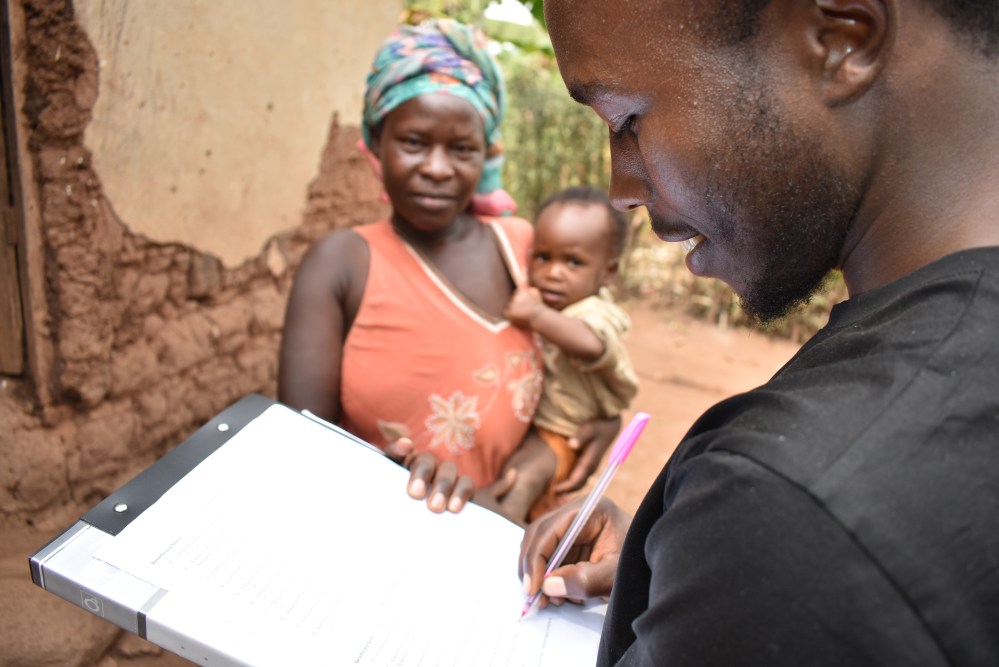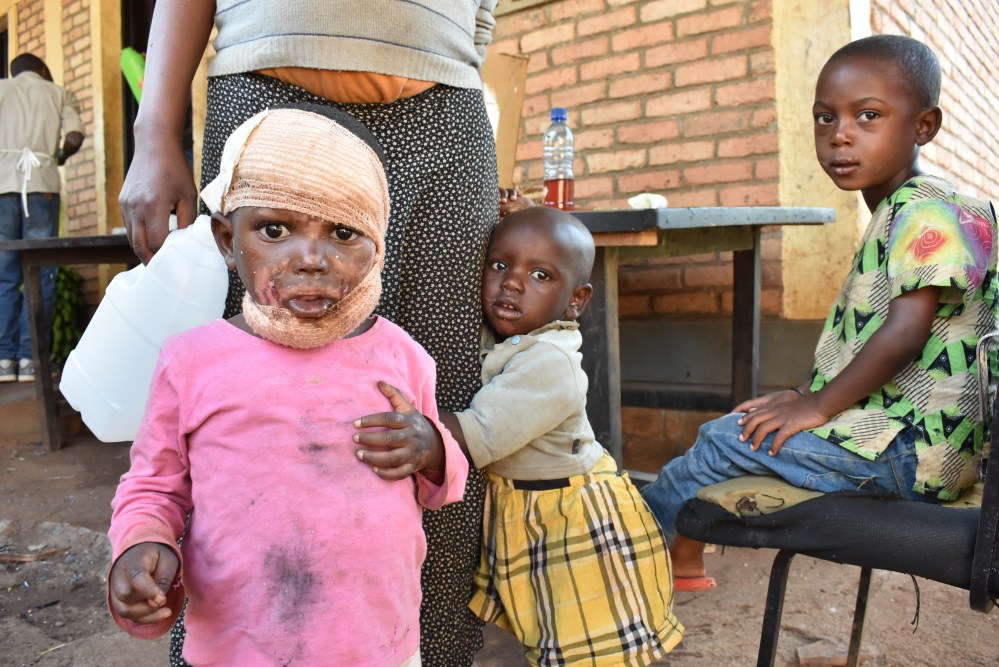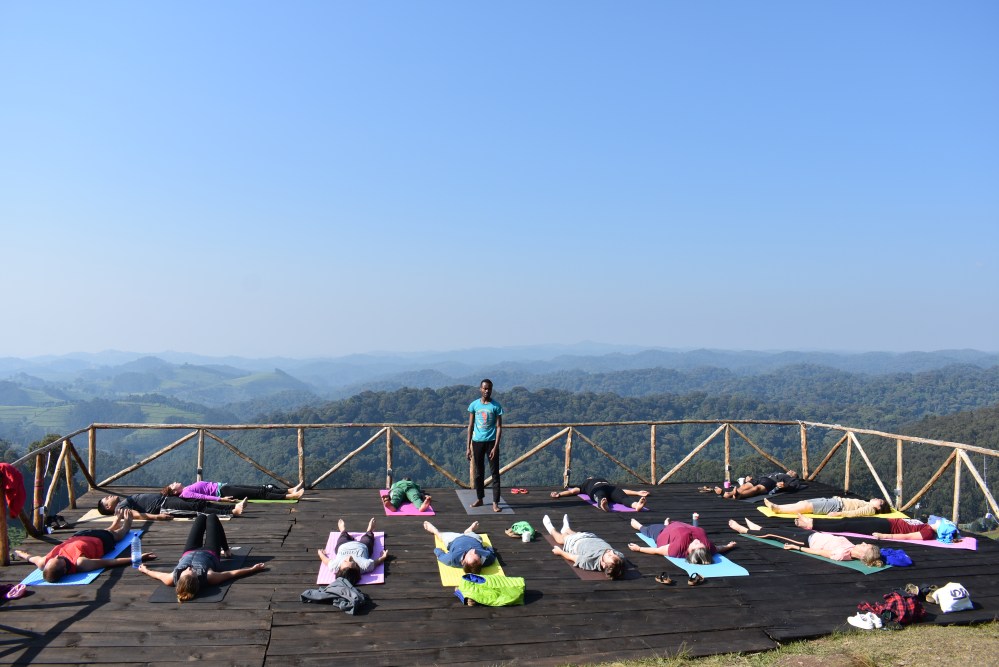I’ve just arrived in Butare when a WhatsApp message flashes from Craig, one of the people involved with Kuzamura Ubuzima ‘Growing Health’, the charity I’m volunteering for in Butare (more on this to come). He’s sharing the contact details for someone he has saved in his phone as ‘Emmanuel Mushrooms’. By way of explanation he writes ‘Emmanuel is our helper/fixer/yoga teacher/agronomist/awesome guy’. Not a bad introduction, I’m intrigued.


Over the next few weeks I get to know Emmanuel myself, enjoy his yoga lessons, learn a thing or two about moringa, but most importantly am blown away by his positivity and ability to accept “to forgive is to set a prisoner free and discover that the prisoner was you”, is a phrase I hear him use several times. Emmanuel is Tutsi and out of 950,000 Tutsi alive in April 1994, he was one of around 15,000 Tutsi to be alive just 100 days later.

The first wave of violence between Hutus and Tutsis broke out in 1959, when the ruling Tutsi were overthrown by Belgian backed Hutu and more than 300,000 Tutsi fled into neighbouring Uganda. Over the next few decades discrimination against the Tutsis worsened, their movement within Rwanda was severely restricted, beating and imprisonment was common.
As well as this, hate speech against the Tutsis had been getting progressively worse during the late 80’s and early 90’s, with Government backed radio and newspapers labelling Tutsi as a ‘permanent threat’ to Hutus and an ‘invading force’. Government extremists were brainwashing Hutus in preparation for what would happen on 6th April 1994, following the assassination of President Habyarimana. Local Hutu militia who had been in training for the last few months were sent out, and with heads full of years of hate propaganda and armed with machetes, were told to ‘exterminate’ the Tutsi. Over the next 100 days more than 800,000 Tutsi and moderate Hutus were killed.
Emmanuel was just three years old in 1994 and lived in a small village near Mahinga along with his elder sister, mother and father, Zachariah. As the militia came progressively closer to the village where Emmanuel lived, his father Zachariah decided that the best chance of survival was to hide out in the garden underneath his beans. Tutsis who were trying to flee their homes were being hunted down and killed by Hutus waiting in the surrounding countryside, running was not an option. As Zachariah and his family hid under the beans they watched as their neighbours and relatives were “cut down” and their houses set on fire. As the militia finally reached their house Zachariah recognised one of the killers as his neighbour.
The neighbour approached Zachariah’s house, pouring oil all around and as he set fire to their family home the man said “now you die Zachariah”, believing Zachariah, Emmanuel, his mother and sister to all be inside. Luckily they all survived, but tragically Emmanuel’s grandparents, aunts, uncles, cousins and neighbours were all brutally murdered. For the next few months little Emmanuel was on the run with his family, hiding in various barns, houses or farms and witnessing unspeakable images, finally returning to their home in 1995.
I ask him if he has ever seen the people who killed his relatives, “of course! All the time” he exclaims, “we took the family in and gave them food after they came back to our village”. I’m speechless, the idea of looking into the eyes of someone who had murdered my loved one makes my skin flush with anger, giving them food and money is beyond my limits of imagination. Unbelievably though, when the family returned to the village in 1996 with no home, job or money, it was Emmanuel’s family who helped them, providing them with food and casual work on their land. Emmanuel’s family even used to invite them round to family occasions and parties.
The atrocities of the 1994 genocide are well documented and known, what is less known is that further waves of killings happened from 1996 – 1999 as Hutus who had fled to the Congo began returning “to finish off the job”. It was in 1997 when Emmanuel’s mother died, his family will never know for sure but it’s most likely that she was poisoned. By then Emmanuel was six and he remembers clearly his mother in the morning as she was preparing for church. During prayers she started to feel ill and headed straight to the hospital, dying on the way in the space of just a few hours.
I ask Emmanuel how he copes with the memories of his childhood, of seeing people be “cut” or shot to death, months of running and hiding from people trying to murder him and years afterwards of grief and hardship. He replies “books, I find my answers in theory. But I also go to the forest and sing, no songs in particular, just a jumble of different things. Sometimes you just need to shout”.

The recipe he has shared is “common food” from his childhood, consisting of potatoes fried up with beans, tomatoes, onions and peppers. It’s something his mother used to make before she died, and now when he and his siblings ask in the right way, their Dad Zachariah makes for them too.
It’s not any old bean dish though, the skin of the beans are first removed before you cook them, which takes time. This is exactly the reason why Emmanuel loves it though, sitting down for an hour, swapping stories and news whilst he shells beans with his loved ones is exactly why the dish is so important to him.
So if you cook this, don’t cheat and use the tinned beans. Use the dried beans. Soak them first then sit down with friends or family and spend time together whilst you slowly peel the skins off the beans and prepare the rest of the dish. Now that’s soul food.
Emmanuel’s ‘family time’ fried potatoes with beans
Serves 4
Ingredients
500g Beans
2kg potatoes
2 onions
6 medium tomatoes
1 green pepper
Bunch of celery leaves
Method
Soak the beans overnight or for at least 10 hours. Then using your hand remove the outer skin of the beans. Peel and then quarter the potatoes.
Cover the beans with salted water and bring to the boil, after 10 minutes of the beans boiling add the potatoes and continue to boil together until both cooked through. Remove the pan from the heat and drain ¾ of the remaining water from the pan.
Finely dice the onions, tomatoes, pepper and celery leaves. Heat oil in frying pan and add onions, cook for a few minutes before adding the pepper and celery leaf. Cook for a further few minutes before adding the tomatoes. Stir the vegetable and mush down with the back of a spoon to make a sauce. Season.
Once the sauce has formed add the potatoes and beans to the pan and mix everything together.
Serve with sliced avocado, piri-piri sauce and eat together with friends and family.

Great blog Chloe, thanks. Lovely to find a recipe that uses celery leaves! What kind of beans do you use?
LikeLike
Hi Lau, the beans are the ‘common bean’ which are the ones that look like Heinz baked beans. Xx
LikeLike
Glad to have discovered your blog. What fascinating stories. And I love how you weave such a powerful story into a recipe post.
LikeLike
Thank you so much! Loving your blog too 🙂
LikeLiked by 1 person